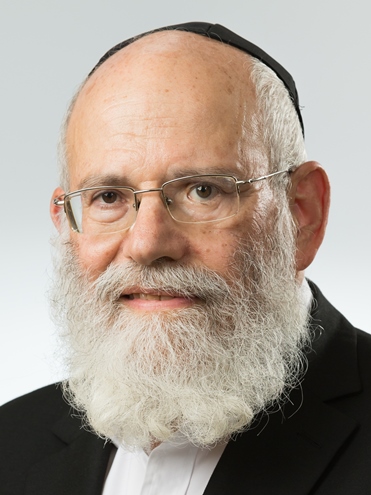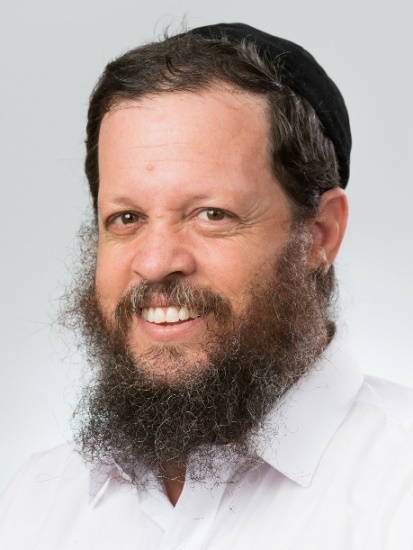The Mishkan and the Camp of Israel
הרב משה סתיו
Our parsha describes the dedication of the altar through the sacrifices that the princes of the tribes brought for this purpose. As the commentators explain, the dedication began on the eighth day of the "miluim," the same day that Aharon offered his own sacrifices, as described in Parshat Shemini. The completion of the Mishkan by Moshe, as described in Parshat Pekudei, "Moshe could not enter the Mishkan," also occurred on this same day. What emerges is that the same event is described in three different places, in totally different ways, and from different perspectives. [It should be emphasized that the three descriptions are not inherently contradictory, since each one of them describes a different aspect. However, the very fact that the Torah split the description in this manner requires explanation.]
In addition, in each of the three descriptions, the "dedication" of the Mishkan appears as the culmination of a process. Namely, in Parshat Pekudei it comes as the conclusion to the building of the Mishkan and its sanctification; in Parshat Shemini, following the details of the laws of the korbanot, it serves as a conclusion to the sanctification of the altar and the Mishkan for service, and of Aharon and his children for priesthood; and in Parshat Naso, we find it after arranging the camps and sanctifying them, and establishing the genealogy of the tribe of Levi and preparing them for service. What is the significance of these three processes?
Furthermore, the service in the Mishkan is shared by the Kohanim and the Leviim, yet the sanctification of the Kohanim is described in Sefer Vayikra, whereas the sanctification of the Leviim is in Sefer Bamidbar (in Parshat Behaalotecha). It is understandable that the laws relating the Israelite camp are separate from Sefer Vayikra, since they are not part of the Mishkan itself, but rather they surround it. The dedication of the Leviim, however, seems connected to the service of the Mikdash itself, and should be explained in Sefer Vayikra!
In order to explain this issue, we must understand the function of the Mishkan. The destiny of Am Yisrael in receiving the Torah and in entering Eretz Yisrael is to express the revelation of the Divine Presence in the world, and, in this manner, bring the world to its fulfilled state. This idea finds expression on different levels and perspectives:
1) The initial expression is through the very process that begins with the Exodus from Egypt and Matan Torah, and is fulfilled with the making of the Mishkan. This created the foundation for the existence of a nation on a sufficiently lofty spiritual level to have the Divine Presence dwell amongst them, which represents the peak of the redemption, as the Ramban writes in his introduction to Sefer Shemot:
When [Bnei Yisrael] came to Har Sinai and made the Mishkan, and G-d once again dwelled His Presence amongst them, then they returned to the status of their forefathers ... and then they were considered redeemed. Therefore the Sefer concludes ... with the completion of the topic of the Mishkan and with the Glory of Hashem filling it always. This idea relates primarily to Moshe Rabbeinu, who brought down the Torah to us and sanctified the Mishkan, for this lofty level is an expression of Divine goodness, which manifested itself through choosing Yisrael and raising them from the lowest level to the level of a holy nation. This process is the content of Sefer Shemot.
2) This level, however, is not sufficient on its own. In order to maintain it for all generations a person must sanctify himself and be worthy of it, and this is through the performance of mitzvot, which is concentrated primarily in the Korbanot and the order of the Temple service. This aspect of the Hashra'at Hashechina (dwelling of the Divine Presence) flows from the service of G-d, and it revolves mainly around the tribe of the Kohanim. Similarly, ritual purity and sanctity, such as through the forbidden foods and the laws of the arayot, certainly belong to the self-sanctification necessary to be worthy of Hashra'at Hashechina, as well as all the laws of the holiness of the Land. [With this, incidentally, we can perhaps resolve the commentators' difficulty with the juxtaposition of Parshat Behar to Torat Kohanim.]
3) Moreover, while the sanctity of the Temple is like the sanctity of the person who purifies himself and prepares himself for the service of Hashem, this sanctity on its own is insufficient. It has to travel and spread throughout the camp. It has to create a reality of a nation that, in every aspect of its life, lives under the influence of this holiness. This is the sanctity of the Israelite camp that is formed through the arrangement of the flags and distancing the spiritually impure, as well as through the laws of the nazir and the sotah.
The sanctity of the Kohen is primarily from above, and his special status flows from the fact that he is sanctified and chosen by Hashem, in contrast to the Leviim whose primary sanctity and uniqueness is because they are given to the service of the Mishkan on behalf of Bnei Yisrael. Therefore, the selection of the Kohanim and their sanctification belongs in Torat Kohanim, whereas the sanctification of the Leviim and their selection belongs to the sanctification of the camp in Bamidbar.
The uniqueness of the dedication of the princes revolves around this sanctity of the camp. In Sefer Shemot, the Book of Redemption, the making of the Mishkan is an expression of Yisrael's redemption and of the receiving of the Torah by Moshe. This process culminates with erecting the Mishkan by Moshe and the revelation of the Divine Presence in its wake. Sefer Vayikra, Torat Kohanim, is designated for the sanctity of the Temple service, and in it the Mishkan was dedicated through the service of the Kohen. The dedication of the princes expresses the relationship between Bnei Yisrael and the Mishkan, and the fact that the camp is sanctified through the presence of the Mishkan and the Divine Presence which dwells in Am Yisrael.
Sefer Bamidbar sets the stage for entering Eretz Yisrael. Eretz Yisrael is a place for the Divine Presence to dwell, so that the existence of holiness expresses itself in all spheres of life, something that can exist completely only in Eretz Yisrael when its inhabitants are in the status of a "camp." [This explains the two attributes of Eretz Yisrael that Chazal point out: 1) The Hashra'at Hashechina there -- that Eretz Yisrael is under the direct guidance of Hashem. 2) That only in Eretz Yisrael does the community have the status of a "kahal" (congregation), whereas outside of Eretz Yisrael they are always considered as individuals. This corresponds to the two sanctities that we mentioned -- the sanctity of the Divine Presence and the sanctity of the camp.
To conclude, let us point out the words of Rashi (Bamidbar 5:12) in explaining the juxtaposition of the laws of sotah to the priestly gifts: "If you withhold the priestly gifts ... you will have to come to him to bring him the sotah." Perhaps the quid pro quo involved here is that when a person brings the priestly gifts he makes holiness paramount in his life. ["In the merit of what do the people of Eretz Yisrael live? In the merit of Terumot and Maasrot."] By not bringing them, he shows that he makes the material perspective, devoid of sanctity, paramount, and therefore the sanctity of the camp disintegrates even in its primary cell of the family. On the other hand, someone who sanctifies himself properly, his whole life is like is a vessel for the Divine Presence to dwell in, and even a simple person can sanctify himself -- an idea expressed in the laws of the nazir.
קוד השיעור: 3780
לשליחת שאלה או הארה בנוגע לשיעור:

.jpg)


